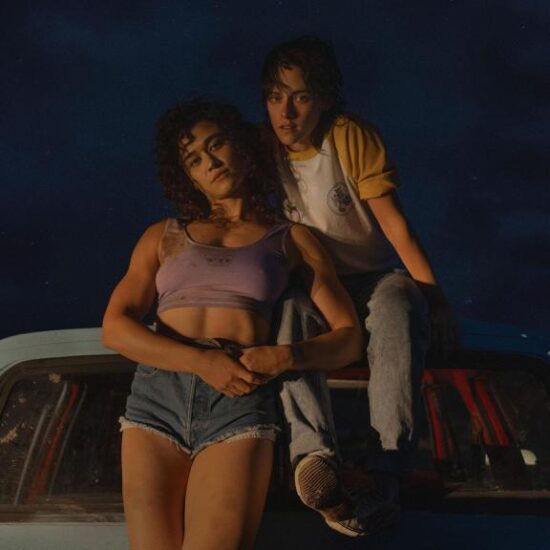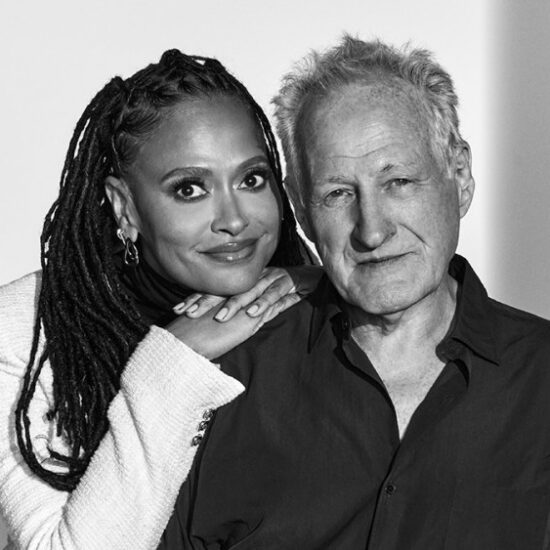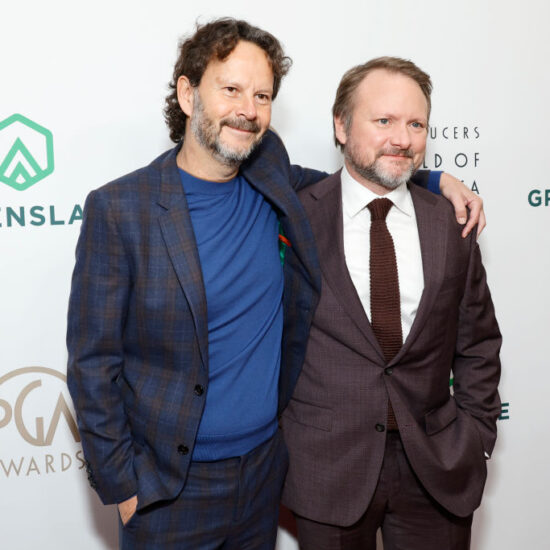
“Past Lives,” might have one of the most emotional endings this year. Cinematographer Shabier Kirchner expressed that he and writer-director Celine Song wanted to “capture that feeling of time” and its “fleetingness” through the cinematography.
“I’m a big fan of the power of, and the beauty of, a combination of images as opposed to a single image. And so trying to build the language of the film through camera movement, and light and direction of camera movement, and repetition of character against architecture and space, was something that we did quite a lot,” said Kirchner. “All to say that it needed to build up to that final scene … we really, hopefully, on the subconscious level [wanted] the screen direction and the length of the screen direction [to] really be sort of indicative of what the characters were going through and where they’ve been and where they’re going.”
Kirchner was speaking as part of Variety’s “10 Artisans to Watch.” Alongside Kirchner, honorees this year at SCAD 10 Artisans to Watch included Dominique Dawson, costume designer for Ava DuVernay’s “Origin;” Melissa Forney, “Rustin” hair department head; Nick Houy, editor of “Barbie;” James Price, “Poor Things” production designer; Carol Rasheed, makeup department head for “The Color Purple;” James Shirley, sound editor-designer for “Moonage Daydream;” Anthony Willis, “Saltburn” composer; Kaitlyn Yang, VFX supervisor of “American Born Chinese;” and Matt Yocum, sound-editor designer for “American Fiction.”
Variety Senior Artisans Editor Jazz Tangcay discussed their respective projects.
Rasheed spoke about the depiction of time in the generational storyline of the upcoming “The Color Purple” based on the Tony-Award winning musical.
“[‘The Color Purple’] spans about 40 years … one of the things that [director Blitz Bazawule] stressed is that he wanted to show us how we really age, in terms of people of color, throughout the process,” Rasheed said. “Being able to create another life in the adaptation of the musical was something that was quite incredible in terms of trying to make sure everybody had their own look, their own feeling and also gradually aging them as time went on.”
With large shifts across time may come drastic shifts in tone. Speaking about the combination of both in editing, Houy joked about the whiplash he got from editing “Barbie,” a genre-blending film.
“Cutting those scenes was a real challenge. You’d have a scene that was a real hilarious, Tati-esque, Marx Brothers chase with Will Ferrell and then you’d have to have a pretty serious scene about mortality and then you’d have to go back to a scene that was a crazy car chase,” said Houy.
Research was central to everyone’s creative process, as both Dawson and Forney noted for “Origin” and “Rustin,” respectively.
“The main thing was a deep dive into research. I was in costume libraries, in online libraries, and any place I could get any visuals or insight. I created a big, huge 300-page deck. We called it the Deep Dive. And that was really our bible for everything,” recounted Dawson.
In addition to costumes, hair is a large aspect of how the character looks on screen, and it often needs to take into account the actors themselves — something that Forney, as hair department head for “Rustin,” was very familiar with.
“We just did research on everybody that was a part of [‘Rustin’],” Forney reflected. “Jeffrey Wright, he wore a wig also. [Colman Domingo’s] companion in the movie that played the priest, he was bald. We had to put a wig on him.”
There’s designing the visual appearances of the talent, but there’s also designing the sets. Price explained the intricate production design behind Yorgos Lanthimos’ bold “Poor Things:” “We did miniatures and a lot of small techniques, viewpoints, where we did real-size sets. Then beyond that we did scale models and single cutouts after, so there was a spectrum [of practices].”
Also based on carefully thinking through visuals, the fourth episode of “American Born Chinese” features Chinese folkloric characters who attend a Met Gala-esque banquet. Yang defined visual effects as the “icing” on top of everything else that goes on behind the scenes of a production.
“What I think of visual effects is adding the cherry on top: the most luscious, buttercream icing right on top of amazing production design, dreamy costumes, the hair and makeup,” Yang said. “It was just all so ornate and elaborate, and it really played into the fantasy of what would be a Met Gala in heaven … we hand-painted a lot of the clouds just to give that eighties, 2D, 2-and-a-half-D, not really computer-generated, not really a simulation [look], and kind of play along with really the rhythm of the dialogue.”
“Rhythm” might be an aspect of dialogue, but there’s no bigger part it plays than in music, which was brought up in the conversation as another major factor in storytelling.
Shirley described his music work on 2023’s live-action “The Little Mermaid,” saying, “From a musical perspective, all these people are shooting using the music as a guide … People on set are listening to the dialogue and listening to the music and timing all their movements.”
Written, directed and produced by Emerald Fennell (“Promising Young Woman”), “Saltburn” follows Oliver Quick (Barry Keoghan), as he enters Oxford and becomes immersed in the world of the wealthy when he goes to Saltburn, the estate of aristocratic schoolmate Felix Carton (Jacob Elordi).
“The idea was classical music is the root of opulence,” Willis said about his thought process in composing the score for the film. “Throughout the film and the score, there’s a lot of classical language like that that Oliver is trying to control.”
“For a movie like ‘American Fiction,’ it’s a drama, it’s a comedy, there’s so much emotion there,” said Yocum of designing the sound for satirical drama-comedy “American Fiction.” “My job as the sound designer on a film like this is all in the subtle details and about crafting the world … in this case, it’s building the city of Boston and what does the Boston train sound like? Because it’s not the same as the Chicago ‘L’ train or a subway in New York. What does a northeastern beach house town sound like? So building that New England environment.”
Tangcay then transitioned to a discussion of advice about dealing with rejection in an industry full of it. Throughout it all, a common, shared sentiment was the idea of building from others, both intellectually and emotionally.
“What I always say is, I think my mom told me, ‘always aim to be the stupidest person in the room. And then you’ll end up doing well because you’re always learning,” Houy said. “And if you’re ever the smartest person in the room, then there’s no room to grow.”
Kirchner characterized his friendships as his support system: “I’m fortunate enough to have worked with a lot of my friends for most of my career, and that was just really encouraging when I got a lot of nos. So it was really important to have that community around.”
“You have to have a team. You can’t do it by yourself,” Forney added. “And that’s where I am today.”
Watch the full conversation above.













